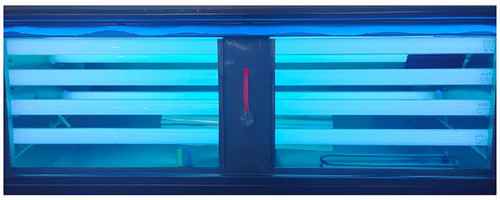
NewsInformation Center
What are some common testing standards for UV aging tests?
2023/07/13
There are several common testing standards for UV aging testing, depending on the type of material being tested and the industry in which it is used.
Here are some examples of commonly used testing standards for UV aging testing:
1. ASTM G154 - Standard Practice for Operating Fluorescent Ultraviolet (UV) Lamp Apparatus for Exposure of Nonmetallic Materials: This standard provides guidelines for the use of fluorescent UV lamp apparatus for exposure of nonmetallic materials to UV radiation.
2. ASTM G155 - Standard Practice for Operating Xenon Arc Light Apparatus for Exposure of Non-Metallic Materials: This standard provides guidelines for the use of xenon arc light apparatus for exposure of non-metallic materials to UV radiation.

3. ISO 4892-2 - Plastics - Methods of Exposure to Laboratory Light Sources - Part 2: Xenon-Arc Lamps: This standard specifies methods for exposing plastics to xenon-arc lamps in order to evaluate the effects of UV radiation on the materials.
4. ISO 11507 - Paints and Varnishes - Exposure of Coatings to Artificial Weathering - Exposure to Fluorescent UV Lamps and Water: This standard specifies methods for exposing coatings to fluorescent UV lamps and water in order to evaluate the effects of UV radiation and moisture on the coatings.
5. SAE J2020 - Accelerated Exposure of Automotive Exterior Materials Using a Controlled Irradiance Xenon-Arc Apparatus: This standard provides guidelines for the accelerated exposure of automotive exterior materials to UV radiation using a controlled irradiance xenon-arc apparatus.
6. MIL-STD-810G - Environmental Engineering Considerations and Laboratory Tests: This military standard provides guidance on environmental testing for military equipment, including UV testing, in order to ensure that the equipment can withstand harsh environmental conditions.
These testing standards provide detailed procedures and guidelines for conducting UV aging testing, including the type of equipment to use, the test conditions to apply, and the methods for evaluating the effects of UV radiation on the materials being tested. Following these standards can help ensure that UV aging testing are conducted consistently and accurately, and that the results are reliable and useful for product development, quality control, and regulatory compliance purposes.
Previous: Importance of Tearing Strength in Material Testing
N e x t : What is the effect of paper tear on paper properties?



